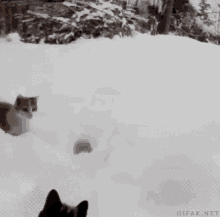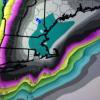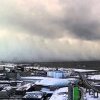-
Posts
691 -
Joined
-
Last visited
About Treckasec

Profile Information
-
Four Letter Airport Code For Weather Obs (Such as KDCA)
KDIX
-
Gender
Male
-
Location:
Millersville, PA
Recent Profile Visitors
3,674 profile views
-
The radar at Key West appears to show a second region of strong winds organizing, which may mean that the moat is due to a new eyewall developing.
-
Oh! I believe that GPM stands for geopotential meters, which is a measurement of altitude. "Geopotential height approximates the actual height of a pressure surface above mean sea-level. Therefore, a geopotential height observation represents the height of the pressure surface on which the observation was taken."
-
Definitely a weenie run, but I thought I'd post this for archival purposes...
-

Wintry event or cold rain for January 9 NYC subforum.
Treckasec replied to wdrag's topic in New York City Metro
The upcoming pattern may just be more common in El Niño's... Even Jan 1996, Dec 2010, and Jan 2011 [La Niñas with a significant snowstorm] are on that list! It's surprising just how close to a robust snowstorm the pattern is, but there are wrinkles in the details preventing the storm from currently seeming more significant... While analogs are helpful, reality will always prevail over similar—yet different—situations. It's certainly something to watch, given that we have a number of days left to track the system, but ensembles haven't been very enthusiastic... It may be a signal that this storm doesn't have as much leeway to grow more significant, but stranger modeling madness has occurred in much smaller timeframes! -

HIGH IMPACT Stormy Christmas (EVE and morning) 12/24-25/20 6P-10A
Treckasec replied to wdrag's topic in New York City Metro
Is there a resource you (or someone else who'd know!) could point to for reading about the R# and how it relates to mixing winds to the surface? How are you determining the R#, and what values are you looking at as a threshold for more wind mixing than.. For example, the BUFKIT momentum transfer product, would suggest?- 227 replies
-
- 1
-

-
- heavy rain
- flooding potential
-
(and 2 more)
Tagged with:
-
It's... Not the best for snow :O) It gets hyped up quite a bit, but it tends to overdo snowfall ^ That's an 80-hour forecast for April 7th, 2018 And for January 20th, 2019, just to provide another example... 73-hour forecast:
-
Treckasec changed their profile photo
-
The ceiling of this convective event isn't very high... Even in the marginal area, instability/SFC instability looks rather limited, which should cap the potential for strong storms. For NE, the low seems to track too far south for any appreciable surge of warm air to allow for more instability... I don't see any models showing any organized convection moving through the NE region (HRRR, 3KM NAM, WRFs on TropicalTidbits)... Only stratiform rain, it seems. I would keep expectations very low...
-
I think that there's a little too much of an... Obsessive nature when it comes to having fun, wintery patterns... There's far too much emotional investment when it comes to hoping for a snowy winter, and it is difficult to wade through many of the posts when I'd rather everyone just have fun, regardless of the weather outside! There certainly is far too much complaining, and it's a shame how much I love weather forums like these, because I keep lurking (and occasionally posting) despite the toxicity... It's too much. I'm glad that you had fun and had a proper escape from the silliness. Hopefully life can get better, because I think that it says something about the state of things when we're clinging to weather to make us happy.
-

2019 ENSO
Treckasec replied to AfewUniversesBelowNormal's topic in Weather Forecasting and Discussion
Do you (or anyone else) have any examples of strong storms that followed large SOI drops? I only ask since I've heard a lot before about there being a correlation between the two, but I am not sure how well the connection verifies! -
-
For what it's worth... Only some of the winters between 12-13 and 18-19 exhibited that average pattern. Those winters are: 13-14, 14-15 (not a great match, though), and 17-18. Those winters were better 'round these parts compared to the other winters: 12-13, 15-16, 16-17, and 18-19. Though, I do remember this region having some difficulties in 17-18 with being too far west for some of the coastals. Regardless, that average pattern has generally not been terrible, even if it hasn't been conducive for large, slow nor'easters like those seen in 09-10. 12-13 13-14 14-15 15-16 16-17 17-18 18-19
-
Are you seeing low-level drizzle/showers moving in the direction of surface winds?
-

2019 ENSO
Treckasec replied to AfewUniversesBelowNormal's topic in Weather Forecasting and Discussion
@raindancewx Thank you for sharing the basic methodology with which you decide on your forecasts!! At least, it's neat to see what major factors you look into to determine what the winter might be like. Regarding last year, I think that it's understandable that many were caught off-guard after seasonal models (and eventually, weeklies) were pushing for a -NAO to develop, with subsequent eastern U.S. troughing... Of course, these things never transpired! But given the persistence of weather models—which we give more credit to than us humans—it seemed that a cold winter was inevitable! Until it wasn't, of course : ) So with that said, I don't think that people were outrageous to have expected a cold winter, and I was personally expecting to have one as well! But I enjoyed reading your posts and your reasonings for why you believed that the winter would not be as snowy/cold in the NE as people said... And it turned out you were right! I definitely look forward to your next forecasts, whether they spell out a warm or cold winter in the eastern states -

2019 ENSO
Treckasec replied to AfewUniversesBelowNormal's topic in Weather Forecasting and Discussion
When considering the expanse of the cooler SSTAs, it seems like the ENSO should lean on the cooler side, rather than on the warmer side. Unless we lose those cooler subsurface + surface waters, I would think that a cool neutral is more probable. -
Could it be possible that the photo was taken at a section of the line that was bowing out? That might've caused the "round" look to the storm, outside of the wide lens/panaroma.
- 2,802 replies
-
- severe
- thunderstorms
- (and 4 more)






.thumb.jpeg.b9e232a6b43e01b7eeee3144246db864.jpeg)



